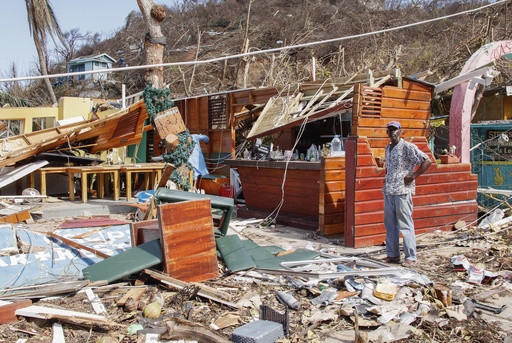Hurricane Beryl is currently making its way through Texas after causing significant damage in Mexico and the Caribbean. The storm strengthened back to hurricane status as it moved over the Gulf of Mexico, having previously been downgraded to a tropical storm due to weakening over land.
Here is an explanation of various weather terms from the National Weather Service:
– Atmospheric river: Moisture plumes that form over the ocean and move over land.
– Blizzard: Strong winds, snowfall, and low visibility conditions persisting for hours.
– Cyclone: Storm with strong winds rotating around a center of low atmospheric pressure.
– Derecho: Fast-moving windstorm covering extensive areas.
– El Nino, La Nina: Climate phenomena affecting global weather patterns.
– Hurricane or typhoon: Warm-core tropical cyclones with minimum sustained winds of 74 mph or more.
– Microburst: Rush of cooled air from a thunderstorm hitting the ground.
– Polar vortex: Large circular weather pattern in the Arctic region.
– Snow squall: Brief period of intense snowfall with strong winds.
– Storm surge: Abnormal rise of water due to a storm.
– Tornado: Violently rotating column of air touching the ground.
– Tornado warning: Alert issued when a tornado is imminent.
– Tornado watch: Notification of conditions conducive to tornado formation.
– Tropical depression: Tropical cyclone with maximum sustained winds of 38 mph or less.
– Tropical storm: Warm-core cyclone with sustained winds ranging from 39 to 73 mph.
– Tsunami: Large sea wave caused by underwater disturbances.
– Nor’easter: Storms moving along the East Coast with winds from the northeast.
– Waterspout: Tornado occurring over water.
– Wind chill factor: Calculation of wind and cold temperature effects on exposed skin.
– Wind shear: Sudden change in wind direction and speed.
This information was originally published on March 15, 2023, and republished on July 8, 2024. The Associated Press’ climate and environmental reporting is supported by various private foundations, with AP maintaining full editorial responsibility.


